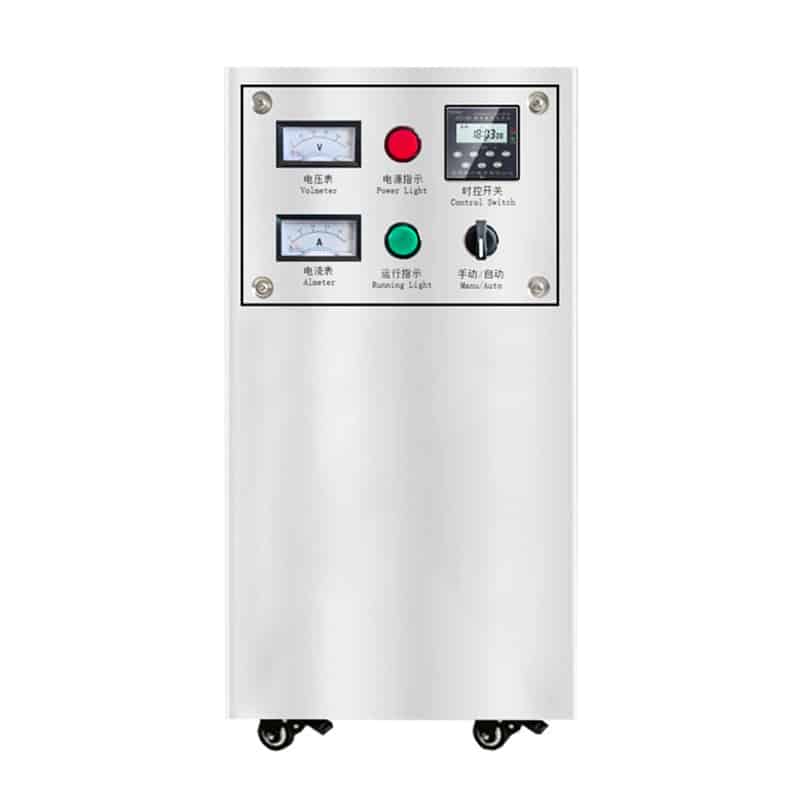What’s chemical disinfection?
Chemical disinfection is a process that uses chemicals to kill or inhibit microorganisms (e.g., bacteria, viruses, fungi, etc.). This disinfection method reduces or eliminates pathogens on surfaces or in liquids by using specific chemicals, such as chlorine compounds, ozone, hydrogen peroxide, ultraviolet light, or other disinfectants, to target microorganisms to destroy or inhibit their reproduction.
Application Of Chemical Disinfection
- Healthcare
- Food Processing
- Drinking Water Treatment
- Swimming Pool Disinfection
- Sewage Treatment
Importance Of Chemical Disinfection In Wastewater Treatment
- Elimination of pathogenic microorganisms: Sewage contains a large number of pathogenic microorganisms, such as bacteria, viruses, and parasites, which may pose a threat to the environment and human health. Chemical disinfection can effectively kill these microorganisms and reduce the risk of disease transmission and contamination.
- Improvement of water quality standards: By eliminating or reducing the presence of microorganisms, chemical disinfection helps to improve the quality standards of treated water to meet environmental requirements and standards for reusable water for irrigation or other uses.
- Auxiliary wastewater treatment process: Chemical disinfection, as the final treatment stage in the wastewater treatment process, helps to eliminate residual microorganisms and improves the overall effectiveness of the treatment. This approach is essential for sewage treatment in areas where highly infectious diseases are endemic.
- Preventive disinfection: Pathogenic microorganisms in sewage can pose a potential threat to the environment and human health. Chemical disinfection can reduce environmental impacts and potential health risks by preventively disinfecting wastewater before it is discharged into the environment.
Chemical disinfection, as an important part of the overall wastewater treatment process, not only helps to improve water quality and environmental protection, but also safeguards public health and the environment.
Commonly Used Chemical Disinfection Methods
Chlorine Disinfection
Working principle: Chlorine compounds such as sodium hypochlorite (NaOCl) or chlorine gas (Cl2) kill microorganisms by releasing active chlorine ions, which oxidize and react with microbial cell membranes and proteins.
- Advantages: Effective disinfection, low cost, controllable treatment effect.
- Disadvantages: Produces by-products (e.g. chlorine substitutes), which may be harmful to the environment in the long term; odor or harmful gases may be formed during the treatment process.
Ozone Disinfection
Working principle: Ozone (O3) is a strong oxidizing agent that kills microorganisms by oxidizing their cell walls and nucleic acids, which eventually decompose into oxygen. Recommended ozone generators from kuosi are available for ozone sterilization.
- Advantages: high efficiency sterilization, no residue, will not increase the chemical substances.
- Disadvantages: Higher equipment and operating costs; ozone is easily decomposed and needs to be generated on site and used immediately.

UV Disinfection
Working principle: Use ultraviolet light (UV) to destroy the DNA structure of microorganisms, so that they lose the ability to grow and reproduce.
- Advantages: No chemicals, no secondary pollution; safe, efficient, easy to operate.
- Disadvantages: Can not maintain the disinfection effect for a long time, need to run the UV lamp continuously; sensitive to the turbidity of the water.
Hydrogen Peroxide Disinfection
Working principle: Hydrogen peroxide (H2O2) inactivates microorganisms by oxidizing and destroying microbial cell membranes, proteins and DNA.
Advantages: No residue, non-toxic, more environmentally friendly.
Disadvantages: High concentration of skin and mucous membranes may have an irritating effect, but a higher concentration can effectively kill microorganisms.
Wastewater Chemical Disinfection
Water quality testing: A comprehensive water quality analysis of the wastewater, including microbial levels and types of contaminants.
Needs assessment: Determine the type of disinfectant required, dosage, and treatment method based on the results of the analysis.
Chemical dosing system design: Design the chemical dosing system, including chemical storage tanks, chemical dosing devices, mixing tanks, and so on.
Parameter setting: According to the water quality analysis data, set the chemical dosing system parameters to ensure the accurate delivery of chemicals.
Dispensing: Accurately dispense the disinfectant into the wastewater through the chemical dosing system to ensure uniform distribution.
Mixing and residence time: Ensure that the disinfectant is mixed with the wastewater and that a certain residence time is maintained so that the disinfectant can effectively act on microorganisms and pollutants.
Process control: Monitor the chemical dosing system to ensure accurate disinfectant delivery and mixing.
Water quality monitoring: Regular monitoring of microbial levels and disinfectant residuals in the wastewater to ensure that treatment standards are met.
Practical Applications Of Chemical Disinfection
- Disinfection
In the final stage of wastewater treatment, the treated water is disinfected with a chemical disinfectant to ensure the effective removal of microorganisms.
Response to emergencies: In response to emergencies or disease outbreaks, chemical disinfection is used to quickly disinfect sewage and prevent the spread of disease. - Sludge treatment
The sludge generated from the treatment of wastewater is disinfected using chemical disinfectants to destroy microorganisms and prevent their secondary pollution and spread. - Water quality improvement
Use chemical disinfectants to improve water quality and remove organic matter and odor from wastewater. - Resource recovery
In wastewater recycling treatment, chemical disinfectants are used to treat recycled water so that it meets the standards for reuse.
Summary
Chemical disinfection is an effective way to treat water quality, how choosing the right chemicals is crucial, in the use of the process needs to consider the treatment object, environmental safety, and disinfection effect, and choose the appropriate disinfection for a particular scenario.
KUOSI specializes in the water treatment industry, providing you with quality customized water treatment solutions. We specialize in the sales and service of screw presses, filter presses, air flotation systems, and wastewater screens. Contact us to solve your water treatment challenges.
